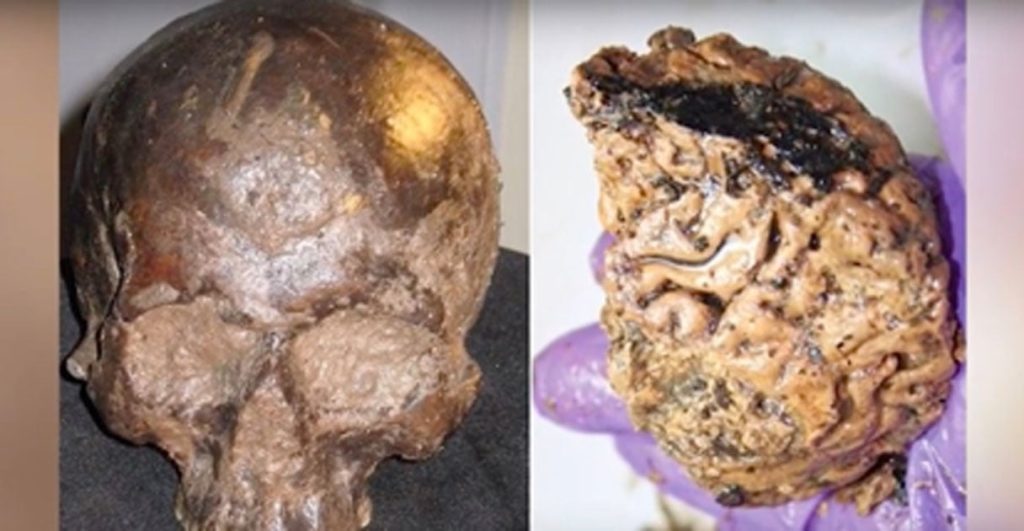In the era between 673 BC to 482 BC, in what we now call East Heslington York, an unidentified Heslington Man faced a perplexing destiny. He was hung by a rope and then ceremoniously beheaded, his severed head reverently placed face down in a pit and swiftly buried. Was this an execution based on tribal justice, or a solemn sacrifice to appease ancient deities?
Such rituals were not uncommon during Bronze Age and early Iron Age Europe, serving both as offerings to the gods and as a method to instill fear in surrounding enemies.
The ancient Britons and Celts used severed heads and slain bodies as markers for sacred water areas. In later years, these heads became trophies, displaying the tales of battles and the grisly acquisition of sacrificed individuals.
In 2008, the discovery of an Iron Age man’s darkened skull in a waterlogged pit at site A1, Heslington, North Yorkshire, UK, unveiled a mystery. The man, seemingly a victim of ritual killing, shocked the archaeological world not just with his skull and neck but with the preservation of his brain.
Understanding the Cultural Context of the Heslington Man’s Time

In Iron Age Britain (800 BC – 100 AD), sacrifices were typically criminals or prisoners of war. Most sacrificed bodies were submerged face down in water, following beliefs that bodies of water were gateways to other realms.
The researcher Ian Armit of the University of Leicester highlighted the significance of the human head in Iron Age Europe. A Pan-European “head cult” associated with fertility, power, gender, and status was evident through recorded classical literature.
While ancient Celts embalmed enemy heads for display, the Heslington skull showed no evidence of embalming or smoking. The question persists: why was his brain preserved?
The Skull of Heslington

During the construction of the University of York’s new campus in August 2008, Mark Johnson of the York Archaeological Trust unearthed the darkened human skull at A1 site in Heslington East, York. The site revealed former water channels, linear ditches, and pits with ceremonial functions spanning from the Bronze Age to the early Roman period.
Examination of the skull exposed traumatic fractures, indicating hanging, and nine cut marks made by a sharp instrument after death. Notably, the skull contained a well-preserved brain.
Scientific Analysis and Results

Dr. Sonia O’Connor led a multi-disciplinary team in further examination. The skull belonged to a male aged 26-45 with no evidence of disease. The brain, though shrunken, was well-preserved due to the anoxic soil in the waterlogged pit and chemical changes during burial.
DNA sequencing linked the individual to Haplogroup J1d, not identified in Britain. O’Connor suggested its existence in Britain’s past, possibly lost through genetic drift.
The study continues, raising questions about the purpose of the man’s death. Unlike other severed head cases, the Heslington skull lacked embalming, suggesting a different fate. His placement face down in a waterlogged pit aligns with beliefs in water as gateways to other realms.
Unraveling the Ancient Enigma
The Heslington man might have been an outsider captured by the Celts. Blessed for sacrifice, he could have been hung, decapitated, and ceremonially buried. The discovery of his brain, remarkably intact, adds a layer of intrigue to this ancient tale.


